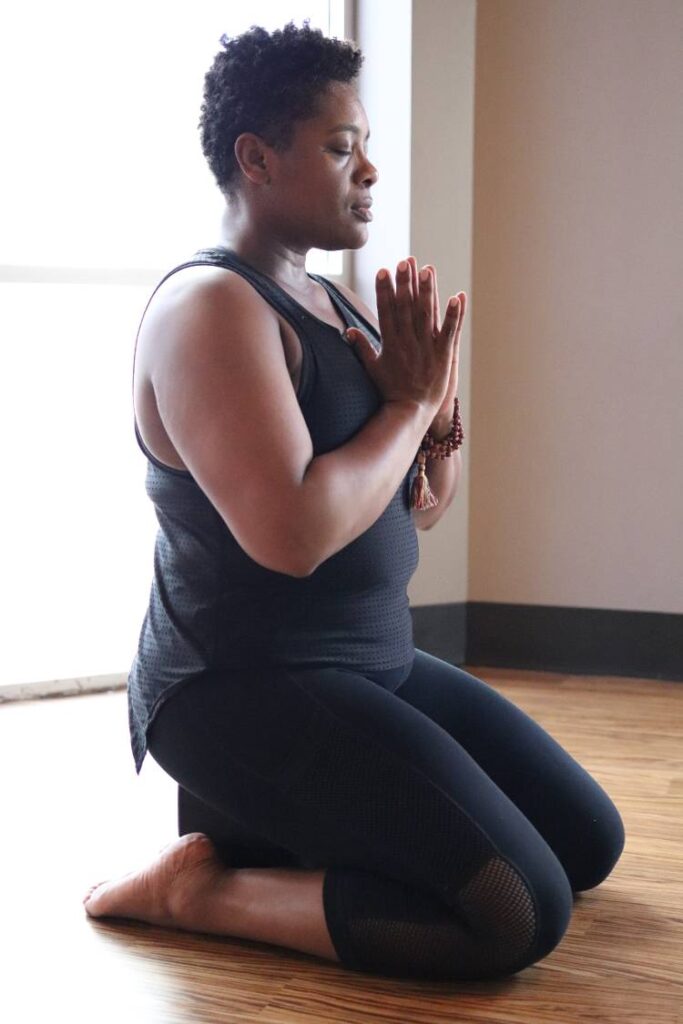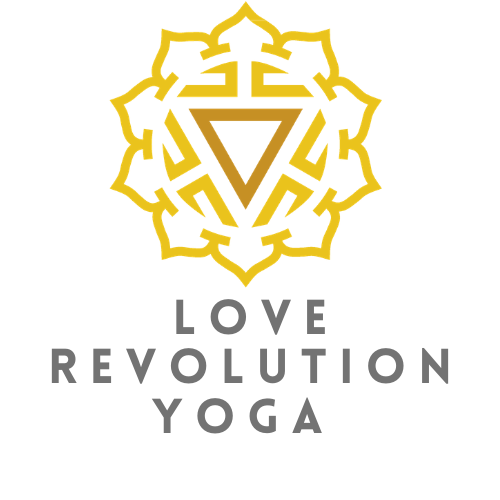In yoga we often start in what we refer to as “sukhasana” — or easy seat.
This so-called “easy seat” is typically a cross-legged seat on the floor.
One thing I know from both personal experience and teaching hundreds of people in thousands of yoga classes: Sitting cross-legged on the floor is far from “easy” for most people.
For most of us, the idea of the easy seat is what gets in the way. There’s a dogma about how yoga is approached — and many teachers don’t actually take the time to help students find a comfortable seat for them.
I struggled with the traditional sukhasana for many years, feeling awkward and uncomfortable with my knees flying up toward my armpits and my spine rounded forward. It was neither easy, nor was it stable.
Then I was in one of the first lectures of my Yoga Teacher Training (YTT) when I had my first philosophical conversation about sukhasana. I explained that sukhasana hurt both my knees and my hips.
“Sit on a block,” the trainer said.

And I did. Still, my knees did not relax below my hips.
She addressed the class: “This still won’t work for her because her hips aren’t relaxed. Try sitting on your knees.”
I did and felt a little more stable, but the flexion (or the bend) in my knees was painful.
She handed me another block. “Stack them up and sit on your knees with your bum on the blocks. How’s that?”
I did as directed and for the first time, I felt comfortable, stable, and well aligned in my sukhasana.
“That’s your easy seat,” she said. “The ideal easy seat is the one where you can sit upright, with your knees below your hips.”
From then on, my default was always to stack two blocks and sit on my knees, rather than trying to sit cross legged.
Sukhasana Easy Seat Variations to Try in Your Practice
For those of you who, like me, find the traditional sukhasana pose uncomfortable, here are a few alternatives to try (check out the video above for demos):
Sit On a Chair
Most of the time when we see people sitting during yoga, they’re usually on the floor. However, any sitting postures and even entire yoga classes can take place from a chair. I recommend using a dining room chair or a chair with a lower back as your alternative to sitting on the floor. Ideally, you’ll be able to sit in the middle of the seat, with your spine upright, your knees in line (ish) with your hips and your feet flat on the floor. That means a bar-height chair won’t cut it.
Sit On Your Knees, On a Block… or Two
As mentioned before, this is one of my favorite ways to sit. Most of the time I use two blocks stacked on top of each other but you can use a single block on the low or medium height. You can also use a meditation pillow or bolster, or stick a small blanket behind your knees for a similar affect. The goal with this option is to reduce the flexion on the knees. Play around with the options. Remember: if you find you like sitting on your knees, but the floor is hard, give yourself a little extra cushion with a small blanket or mat pad under your knees.
Sit On a Block, Bolster or Blanket
In most cases the way we make sukhasana accessible is by elevating our seat. So perhaps all you need to do is give yourself a little lift with a blanket, a block, or a bolster. I will sometimes sit on a block with my legs crossed. I used to teach at a studio where we recommended folding a couple small blankets and sitting on the edge. Both options elevate your bum just a bit, and for some people, it’s enough lift to let the knees fall below the hips in a cross-legged position. If you have pillows laying around, you can try that as an option as well.

